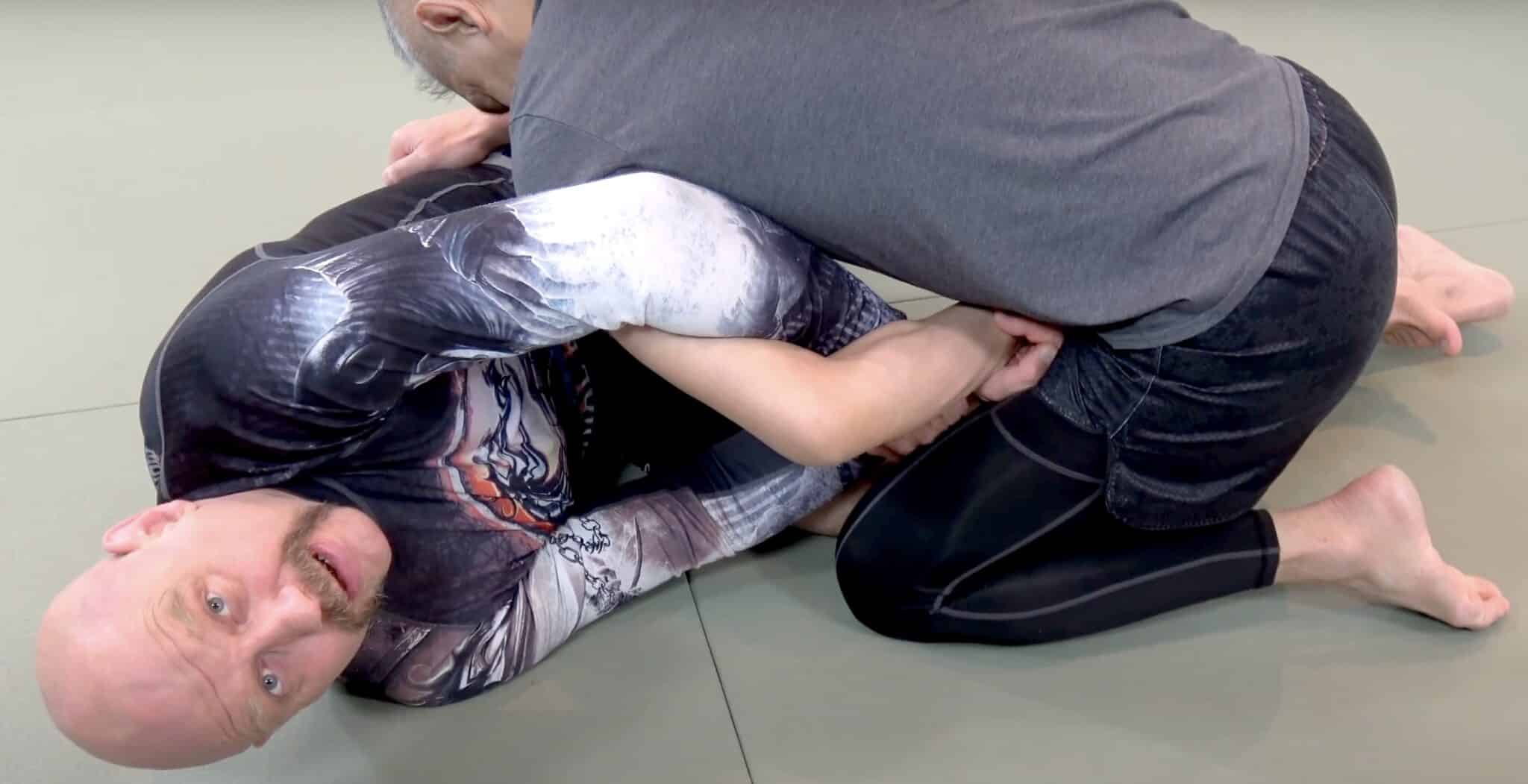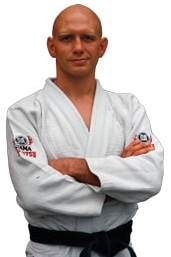
The Kimura is a powerful bent armlock that primarily attacks the shoulder joint, but in addition to being a very powerful armlock it’s also a control position.
Here’s the condensed form of this argument in video format. Check it out and then scroll down for many concrete examples of new ways to use the Kimura.
Kimura Control Topics
The Kimura is Both a Submission AND a Control Position
Let me explain…
Most people think of BJJ as having various control positions like mount, side control, knee ride etc. These positions typically pin your opponent’s upper body to the mat, limit his body to the ground, and open him up to chokes, armlocks and leglock submissions.
There’s nothing wrong with this approach – it’s a good basic heuristic that has allowed many people with minimal training to do OK in real fights. I’ve even written a book about this topic – A Roadmap for BJJ – which you can download free by clicking here.
However at intermediate and advanced levels, things can get a little fuzzy. Submissions can become control positions, and control positions can become submissions.
In fact learning how to use a submission to control someone is the fastest way to master that submission and all the transitions and followups that come from it.
Let’s look at the Kimura as an example.
There are many different ways to finish the Kimura as a submission, including from side control, north-south, half guard, standing, etc.
These are all totally valid submissions, but in recent years the trend has been to use the Kimura as a control position. That means you use the grip to limit your opponent’s ability to move around and prevent him from launching his own offense.
(I can’t prove it, but I suspect the increasing use of the Kimura for control is due to the popularity of no gi grappling where there are just far fewers handles with which to control your opponent.)
So nowadays there’s a trend to use the Kimura mostly to control the opponent and – eventually – set up armbars, triangles and backtakes.
Let’s take a look at what that might look like…
Near Side vs Far Side Kimura Control
To start with, you have to realise that there are two fundamental ways to use the Kimura grip to control an opponent: on the near side, and on the far side.
Imagine being on your opponent’s left side… If you’ve got his left arm Kimura’d then that’s near side control, and if you’ve got his right arm tied up then that’s far side Kimura control.
This concept is explored in detail in this article here, but you can also just watch the video below…
Kimura Control to the Back
The Kimura can be used to take the back from a variety of positions.
One beautiful way to do this is from bottom (i.e. from guard or half guard) as detailed in this article or in the video below…
It can also be used to take the back from the top position, as detailed by Brandon Mullins in How to Defeat the Bigger, Stronger Opponent Series 2…
Finally, in Rolling Backtakes for Everyone I taught a fancy-looking but fairly simple method to take the back from the north-south position. Here’s a short from my Youtube channel demonstrating that move…
Kimura Control to Triangle
Controlling your opponent with the Kimura allows you to create space between his arm and his body, and if you can get one of your legs into that space then you have a good chance at applying one of the many styles of triangle choke (click here for the 5 basic styles of triangle choke).
In the video below (which is part of a free instructional in the Grapplearts BJJ Master App) Rob Biernacki shows you how to use the Kimura grip from the back to apply and finish the rear triangle choke…
Kimura Control Guard Pass
An exciting development in the last few years has been using the Kimura grip to pass the guard.
A good example of this is Elliott Bayev in 30 Second Fight Finishers using the Kimura to pass the open guard and the half guard. This technique looks fancy, but it’s not nearly as difficult to do as it might first appear…
Kimura Control Drill With Lots of Armbars
Techniques are cool, but you need a framework in which to train your techniques so they become smooth and instinctive.
One of the best methods I’ve seen for this is Rob Biernacki’s FYJJ method. The FYJJ Kimura control drill was first taught in his Submission Formula instructional and then further developed and fleshed out in the best-selling BJJ Games instructional.
Here’s one example of a drill you might use to train Kimura control with lots of examples of armbar finishes.
I hope I’ve convinced you to think of the Kimura as more than a submission.
Developing your ability to control your opponent with the Kimura control will reap many benefits.
It’ll give you answers for when he’s escaping the Kimura, give you options other than the submission, and – ultimately – give you the freedom to take your time and finish the Kimura itself more often!


